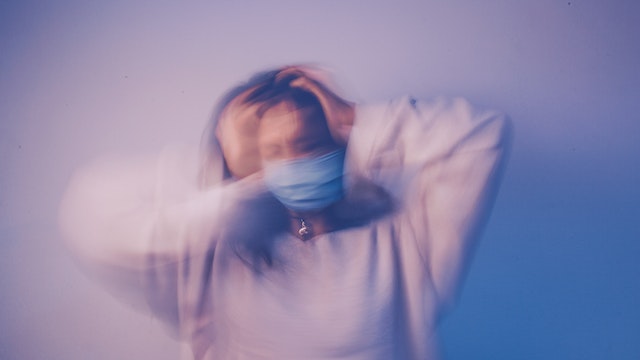We all feel nervous and anxious in some situations – like when it is our day at work or school, when we are going out on a date, while giving an important speech, and much more. It is normal to feel those butterflies in your stomach or have jittery thoughts in your head.
But if the mere idea of being in a social situation makes you extremely anxious and overwhelmingly stressed, you might be dealing with what science calls social anxiety disorder.
According to Mental Health America, social anxiety disorder affects 15 million or roughly 7% of the American population. The symptoms of social anxiety disorder can disrupt a person’s regular life and cause severe mental stress.
Early detection and treatment are the right way forward for those with social anxiety disorder. Therefore, in this post, we will dive deeper into the condition, its symptoms, causes, and treatment options.

What Is Social Anxiety Disorder?
Social anxiety disorder (SAD) is a chronic condition characterized by an intense fear of being present, embarrassed, or negatively evaluated in social situations. People with SAD are constantly scared of doing or saying something that will make them feel humiliated in a group of people.
At its very core, SAD is a form of anxiety over what people will think. It arises when people think that those around them will judge them for their words and actions. Others are anxious about their SAD symptoms being a source of embarrassment in social situations.
Symptoms of social anxiety disorder can affect a person’s day-to-day life. The symptoms can become so extreme that people might avoid being in social situations altogether.
Symptoms Of SAD
Social anxiety disorder, just like other mental health conditions, lies on a spectrum. It is defined by two extreme ends where on one side, people are terrified of any social situation. On the other hand, some people feel anxious only in a particular social situation and not all.
The common symptoms of social anxiety disorder include the following:
- feeling shyness or discomfort in common social situations,
- fear or anxiety that interferes with regular functioning,
- avoidance of social situations,
- low self-confidence,
- fear of talking or communicating with others,
- avoiding situations where you are the center of attention,
- expecting the worst possible outcomes from any social interaction,
- physical symptoms like shaking, sweating, etc.
The feelings of shyness might not necessarily be signs of social anxiety disorder, as people’s comfort levels in social situations vary. SAD generally begins in the teenage years. However, in some people, it can also start at a younger or older age.
Causes Of SAD
Social anxiety disorder arises due to a complex interplay of various factors, including a person’s environment, biology, and psychology. This means that while some people can trace their SAD from an incident in their life, others might have it because it runs in their family.
Social situations that might trigger anxiety in people with SAD include:
- shopping,
- giving speeches or presentations,
- meeting new people,
- going to school or college,
- speaking to people higher in authority,
- being spotted in public, etc.
Read more: Understanding Hikikomori – A Hidden Crisis Of Social Withdrawl
Treatment Options
There are many different available ways to deal, manage, and cope with social anxiety disorder. These include the following:
1. Cognitive-Behavioral Therapy
One of the most common approaches medical professionals use is cognitive-behavioral therapy (CBT). Since SAD has been centered around toxic and negative thoughts and actions, CBT is a preferred treatment choice. CBT helps people with social anxiety break these toxic patterns and reinforce positive behaviors.
2. Mindfulness-Based Therapies
These therapies include stress reduction and cognitive-behavioral approaches centered around the practice of meditation. During the course of mindfulness-based therapies, people learn to manage their thoughts and accept themselves non-judgmentally.
3. Social Skills Training
This treatment plan includes education and exercises that help affected individuals develop adequate social skills. A major part of social skills training involves using role play to teach significant social skills.
Read more: 5 Effective Tips On How To Improve Your Social Life
Conclusion:
Social anxiety disorder affects around 15 million people in America. It is a chronic condition characterized by an intense fear of social interactions and situations. It leads to anxiety symptoms and avoidant behavior that affects a person’s regular life.
Social anxiety is at its worst for some people during holidays. To learn more about managing social anxiety during the holiday season, click here.
To continue learning about mental health, subscribe to Your Mental Health Pal.

